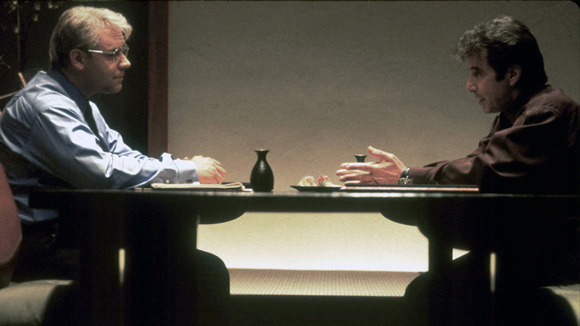(2016) Documentary (Abramorama) Chris Hedges, Davitt McAteer, Chuck Keeney, Richard Trumko, Rev. Ron English, John Cavendish, Doug Estepp, Rev. Matthew Watts, Franklin Delano Roosevelt (archival footage), Peter Galuszka, Bruce Stanley, Terry Steele, Denny Tyler, Dr. Rahul Gupta, Chuck Nelson, Jack Spadaro, Charlotte Neilan, Maria Gunnoe. Directed by Mari-Lynn C. Evans and Jordan Freeman
I’m sure not many of us thought that coal mining would be a major controversy in 2016. President-elect Trump has vowed to bring more jobs to coal country, particularly West Virginia. At the same time, Senate Majority Leader Mitch McConnell has refused to bring to a vote the Miner’s Protection Act that will protect the pensions and rights of tens of thousands of coal miners, all the more heinous because he represents a coal state.
This documentary, co-directed by West Virginia native daughter Evans and activist Freeman, takes a sober look at the history of coal mining, starting with the labor wars of the first part of the 20th century on through the reforms to working conditions brought about by the union, the erosion of the union in the latter part of the century and how the mining companies, particularly Massey and it’s absolutely amoral chairman Don Blankenship, has exploited the miners as surely as they’ve exploited the environment.
Of late, mining is mostly done by the mountaintop removal method, which causes egregious harm to the ecology, leaving pristine mountains scarred and as lifeless as the lunar surface, and yet the people of West Virginia have been solid supporters of coal companies who are the main providers of jobs in the Mountain State.
Evans and Jordan don’t pretend to be impartial; there’s a bias here and while I admit it’s hard to argue against them, there isn’t much of an attempt to address the concerns of the people of West Virginia regarding jobs and employment, a key issue in the recent election and certainly one of the big reasons West Virginians voted for Donald Trump in overwhelming numbers. As a liberal, I have to admit that the left has fallen down on addressing the people of West Virginia (and other states like it), rather almost telling them “we know what’s good for you.” In West Virginia, jobs are good for them.
And yet West Virginians have not done well by the coal industry. Coal mining has killed scores of West Virginians, from black lung to mine explosions, floods and mine collapses to labor disputes over the decades. Coal miners have worked in some of the most abysmal conditions in human history, but the feeling is any job is better than no job. Coal companies created company towns, often putting their employees into what amounted to slave labor, paying their employees in scrip which they could only spend at company stores at vastly inflated prices, the workers knowing if they rocked the boat they’d be forcibly evicted from the company-owned home they live in with their families.
It is a mournful litany of abuse, corporate greed and political spinelessness, buttressed by archival footage and talking head interviews, with intervening footage of the natural beauty of West Virginia – one of the most beautiful states in the Union – and the results of the Big Coal’s irresponsible lack of regard for the consequences to the environment of their actions.
This is one of those documentaries where the content is so compelling that I end up overlooking that the actual craft of the documentary could be better; the filmmakers leap around in time and subject to sometimes dizzying effect. A more linear narrative would have served the film better. I also would have liked to at least hear more from West Virginians concerned about jobs over environment and health; they are rendered here mainly to hysterical screaming mobs. There are some intelligent people on the other side and their point of view certainly should have been heard. Still, this is something that in the words of former Rage Against the Machine guitarist and activist Tom Morello every American worker should see, and I agree with him. While this focuses on coal, one of the most egregious industries in terms of abuse of its workers in American history, it is also the story of all workers in America. It is time their voices were heard.
REASONS TO GO: Some of the archival footage is nifty. The film is a timely look at the state of the labor movement.
REASONS TO STAY: There doesn’t seem to be a whole lot of impartiality here. The filmmakers could have tied the struggle here more in with the current political climate.
FAMILY VALUES: Adult themes and profanity.
TRIVIAL PURSUIT: The film’s tagline “Pray for the dead and fight like hell for the living” is a quote from Mary Harris “Mother” Jones, an ardent union organizer and the person for whom Mother Jones magazine was named.
CRITICAL MASS: As of 12/16/16: Rotten Tomatoes: 89% positive reviews. Metacritic: 74/100.
COMPARISON SHOPPING: Harlan County, USA
FINAL RATING: 7.5/10
NEXT: Rules Don’t Apply



